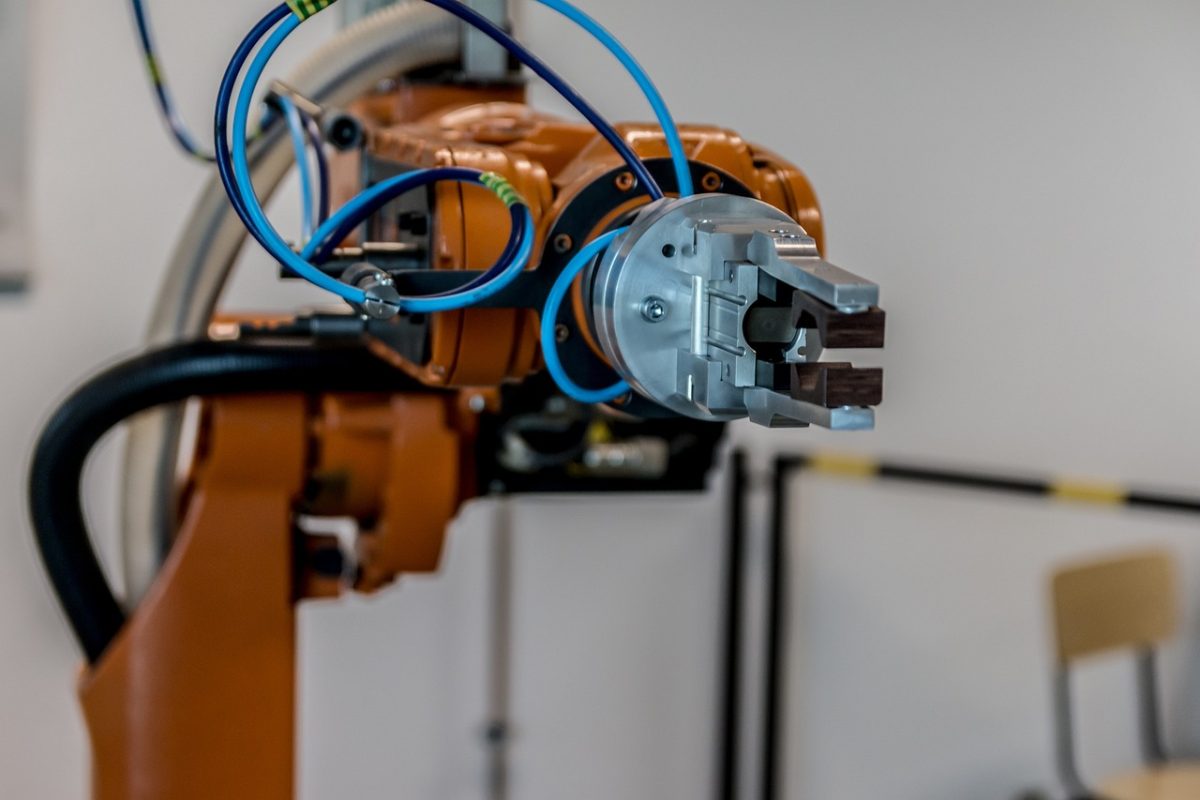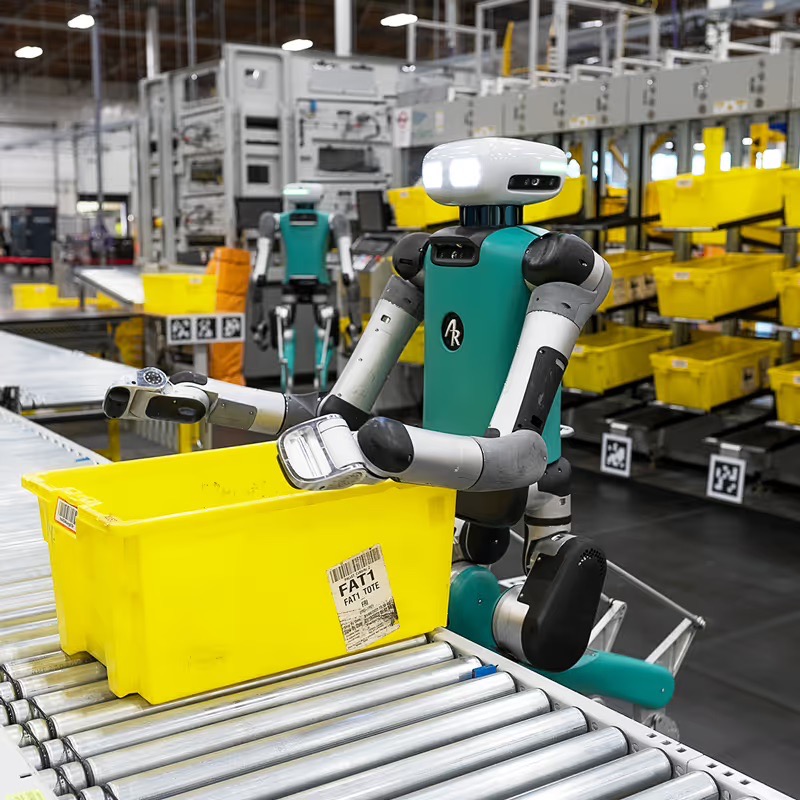Robots have long been part of our collective idea of The Future, but two big obstacles have always stood in their way.
One was movement. When would robots become advanced enough to move around in the real world? We’ve all seen a Dalek fall down some stairs. But today, we’re seeing Boston Dynamics machines parkour-ing through forests. The mobility challenge seems to be solved.
The second obstacle was intelligence. I’m not even going to discuss that one – today’s AI seems ready to power general-purpose robots.
What I do want to discuss is the future of robots in the UK.
The British government is talking hopefully about the robotics industry. A 2024 report titled “A New National Purpose: The UK’s Opportunity to Lead in Next-Wave Robotics” says:
“In the next decade and beyond it will be increasingly possible and cost-effective to roll out robots that can operate with a high degree of autonomy in industry, public services and wider society.”
The question is, what are we doing about it?
Many technical challenges to building robots have been solved – but how ready is the UK to compete on a global scale?
It’s a fascinating question – and a very important one. The world is changing fast. When I think about our country’s future, I wonder where we can realistically compete. As a parent, I also wonder what kinds of jobs will be available to my kids when they grow up.
In Britain, we like to think of ourselves as a nation of inventors and creative thinkers. Robotics is a field where such people should excel.
Robotics is also being touted as the physical implementation of AI – the natural next step in AI’s evolution.
All of which makes it sound like a no-brainer that the UK Government and private investors should be focused on robotics.
But how is the UK robotics industry actually shaping up?
Late to the race
While the UK is still outlining strategies, other major economies are already making robotics a priority – and creating value. According to a report from the National Robotarium, the global robotics market is on track to reach £283 billion by 2032.
In the US, companies like Agility Robotics, Boston Dynamics, and Figure have delivered robots with commercial applications. Agility’s Digit, the world’s first commercially available humanoid robot, is walking around factory floors as I write this.
In Japan, robotics and automation are nothing new. In 2022, Japanese factories were home to over 50,000 industrial robots according to IFR data. The same year, Japan exported more than 200,000 robotics products and held 46% of the global robotics market.
China is moving even faster. In 2023, it installed 276,000 industrial robots — six times more than Japan per IFR data. Other leaders include South Korea (31,000 annual installations) and Germany (28,000) – both continue to scale their robotics efforts aggressively.
Slowest uptake among the G7
Meanwhile, the UK currently has the lowest rate of robotics adoption among G7 countries. We have just 119 robots for every 10,000 manufacturing employees, according to the National Robotarium. That’s fewer than developing economies like Mexico and Turkey.
This could be seen as a positive: low uptake might mean fewer jobs are being sacrificed to profit-driven automation.
But Britain’s non-robotic manufacturing industry is not thriving. It’s creating fewer jobs than in those robo-ready countries like Germany and Japan.
If robotics can make our industries more globally competitive then it might help to create new jobs, rather than eliminate them.
New funding, new focus
Last year the UK Government launched a new “modern industrial strategy” called Invest 2035, outlining how it will secure investment and kickstart growth across the country.
What some found disappointing was that it didn’t mention robotics at all. In a previous strategy document, robotics and autonomous systems (RAS) were listed as one of Eight Great Technologies we should be investing in – then RAS disappeared from the agenda.
It was as if the UK had “deprioritised the technology to focus on other areas.”
More recently, though, the government has taken steps to correct course. The Smart Machines Strategy 2035 sets out clearer actions to support robotics, including:
- Establishing an Office for Smart Machines (OSM) inside government
- Creating a Centre of Excellence to bootstrap software and hardware development tools
- Launching the £100 million Smart Machines venture investment fund
- Developing a national skills programme across higher, further, and school education
Will it make a difference?
I’m not an industry insider, but from where I’m sitting, it doesn’t feel like enough to catch up with the pace of global competition.
British robotics companies are overcoming the odds
Of course, none of these problems can stop a team of bright people with a plan.
A handful of robotics companies are already thriving in the UK – just as you’d expect.
London-based Shadow Robot builds the world’s most dexterous humanoid robot hands – the only hand with 24 movements and 20 degrees of freedom. The company has worked with science leaders including NASA, GSK, Siemens, MIT, and Qualcomm, and exports its products all over the world.
Ocado – yes, the online grocery service – also has a technology unit that’s built the Ocado Smart Platform, an end-to-end ecommerce, fulfilment, and logistic solution that combines AI and robotics. It’s already in use in over 1,000 stores in more than ten countries.
And in Cornwall, Engineered Arts develops some of the world’s most expressive humanoid robots. Its product Ameca is a platform for development of future “AI x AB” robotics technologies: artificial intelligence with a human-like artificial body.
They’re proof the UK has the talent, creativity, and engineering skill to play a leading role in the next wave of robotics.
Where we go from here
But these companies will need the right support to scale, succeed globally, and then actually stay in the UK.
Will they get it? That’s the question. As good as we are at innovating, we’re just as good at letting our greatest successes leave the country.
The next few years will matter. If the right support shows up – in funding, policy, and infrastructure – the UK could still carve out a serious role in the global robotics industry.
Fingers crossed 🤞🏻


